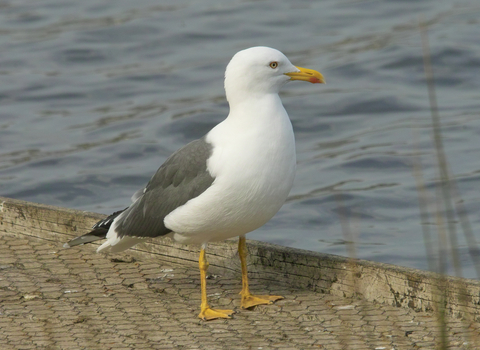
Lesser black-backed gull ©Derek Moore
Lesser black-backed gull
The lesser-black backed gull can be spotted around the coast in summer, with the biggest colony on Walney Island, Cumbria. Look for it over fields, landfill sites and reservoirs during winter.
Enw gwyddonol
Larus fuscusPryd i'w gweld
January to DecemberSpecies information
Category
Ystadegau
Length: 52-67cmWingspan: 135-150cm
Weight: 620-1000g
Average lifespan: 15 years
Classified in the UK as Amber under the Birds of Conservation Concern 5: the Red List for Birds (2021).
